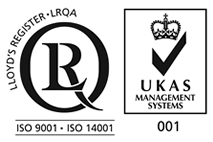
Main Products
Copyright 1998-2025 Firmetal Group All Rights Reserved. | Sitemap
Ultra-thin Ta-W alloy foil with an alloy composition of W:5.0wt% and a allowance of tantalum. tantalum powder with purity ≥99.99% and average particle size of 5 ~ 10μm and tungsten powder with purity ≥99.99% and average particle size < \5μm were divided according to alloy, and Ta powder and W powder were wet mixed in a high-energy ball mill with anhydrous ethanol as the medium, the ball mill speed was 150rpm, the ball mill time was 20h, and the ball mill atmosphere was argon. Pellet mass ratio =8:1, the mass ratio of total powder mass to anhydrous ethanol is 3:1; The material of the grinding ball is cemented carbide, and the specification of the grinding ball is Φ14mm; The mixed alloy powder is put into a vacuum drying oven for drying. The conditions for vacuum drying of the mixed powder are as follows: After absolute vacuum < 1×10-4Pa, the temperature is 600℃, the alloy powder is isostatic pressed, the forming pressure is 180Mpa, the pressure holding time is 10min, and then the absolute vacuum < 3×10-3Pa environment for a sintering, sintering temperature is 2300℃, sintering time is 2h. After the primary sintered billet was cold rolled with 50% deformation, the secondary sintering was carried out in the environment of absolute vacuum < 3×10-3Pa, the sintering temperature was 2300℃, and the sintering time was 1h. After cold rolling the secondary sintered billet with 50% deformation, the billet was sintered three times in the absolute vacuum < 3×10-3Pa environment, the sintering temperature was 2300℃, the sintering time was 0.5h, and the density of 98% Ta-W alloy billet with metallurgical combination was prepared.
After the Ta W sintering billet was cut by electric comb saw into 12mm thick billet, the sintering billet was pickled for 20~40s with a cleaning solution composed of 25~30% nitric acid by volume, 5~10% hydrofluoric acid by volume and 3:3:5 water by volume ratio, and then rinsed with water and dried to remove surface impurities and oil. After pickling, the billet was annealed in a vacuum furnace. The annealing process was held at 1200℃ for 80min, and the absolute vacuum was < 3×10-3Pa, and then cooled with the furnace. Then the billet is rolled horizontally on the two-high mill, the slab is cold-rolled from 12mm to 2mm, and then longitudinally rolled from 2mm to 1.8mm, and the pass deformation is controlled between 8 and 10%.
The 1.8mm sheet obtained by cold rolling was first washed with carbon tetrachloride and gasoline with a volume ratio of 1:1, and then the dirty carbon tetrachloride and gasoline remaining on the surface of the alloy sheet was scrubbed with a mixed solution composed of anhydrous ethanol and acetone with a volume ratio of 2:1, and then the sheet was put into a molybdenum box and annealed in vacuum. The absolute vacuum is < 3×10-3Pa, the annealing temperature is 1200℃, and the annealing time is 60min. After annealing by vacuum furnace, the 1.8mm sample plate was cold-rolled on a four-high universal rolling mill (work roll diameter is 150mm) to 0.64mm, and the pass deformation was also controlled between 8 and 10%.